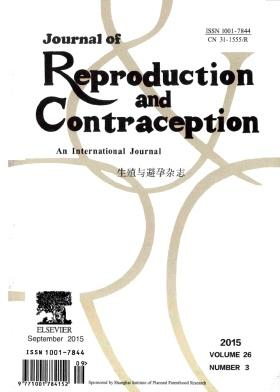7.0 t时BOLD-MRI评价妊娠期糖尿病大鼠胎胎盘氧合
IF 0.7
4区 医学
Q4 OBSTETRICS & GYNECOLOGY
引用次数: 0
摘要
目的:比较妊娠期糖尿病(GDM)大鼠正常妊娠与妊娠期高氧后血氧水平依赖性(BOLD)参数的差异。方法:采用高脂高糖饮食(HFS)联合腹腔注射链脲佐菌素(STZ)诱导大鼠GDM。在胚胎第19天(E19),使用7.0 t动物MRI扫描仪对两组怀孕大鼠进行成像。TurboRARE最初用于定位胎胎盘单位(fpu)。然后,在空气和氧气吸入期间进行多次梯度回波BOLD。生成T2*图,计算T2*基线值和T2*值的绝对变化(ΔT2*, T2*氧与T2*空气之差)。MRI扫描后,对胎盘和胎儿进行无菌剥离、称重和免疫染色。结果:实验用大鼠9只。母亲吸氧后,两组患者T2*均明显升高。胎盘的ΔT2* (5.97 vs. 7.81 msec;P = 0.007)和胎儿脑(2.23 vs. 3.97 msec;P = 0.005), GDM组与对照组之间差异有统计学意义。胎盘糖原含量及炎症因子(IL-6、TNF-α)的组织化学检测显示,GDM组胎盘糖原含量及炎症因子(IL-6、TNF-α)水平明显高于正常组。结论:BOLD-MRI显示GDM大鼠胎儿胎盘对母体高氧反应异常。我们相信,这种方法可以潜在地用于评估胎盘功能障碍和评估妊娠期GDM胎儿的状态。本文章由计算机程序翻译,如有差异,请以英文原文为准。
Evaluation of fetoplacental oxygenation in a rat model of gestational diabetes mellitus using BOLD-MRI at 7.0-T
Objective: To compare the differences in blood oxygen level-dependent (BOLD) parameters following maternal hyperoxia between normal pregnancy and pregnancy in the rat model of gestational diabetes mellitus (GDM). Methods: GDM was induced by high-fat and sucrose diet (HFS) combined with an intraperitoneal injection of streptozotocin (STZ). On embryonic day 19 (E19), the two groups of pregnant rats were imaged using a 7.0-T animal MRI scanner. TurboRARE was initially used to localize the fetoplacental units (FPUs). Next, multiple gradient echo BOLD was performed during the air and oxygen inhalation periods. T2* map was then generated, and the baseline T2* and absolute changes in T2* value (ΔT2*, difference between T2*oxy and T2*air) were calculated. Following the MRI scan, the placentas and fetuses were aseptically stripped, weighed, and immunostained. Results: Nine rats were used in this study. After maternal oxygen inhalation, T2* increased significantly in all subjects in both groups. The ΔT2* for the placenta (5.97 vs. 7.81 msec; P = 0.007) and fetal brain (2.23 vs. 3.97 msec; P = 0.005) differed significantly between the GDM and control groups. Histochemical detection of placental glycogen content and inflammatory cytokines (IL-6 and TNF-α) showed significantly higher levels in the GDM than in the normal placenta. Conclusions: BOLD-MRI revealed abnormalities in the fetoplacental response to maternal hyperoxygenation in rats with GDM. We believe that this approach can potentially be used to evaluate placental dysfunction and assess the state of the fetus during pregnancy with GDM.
求助全文
通过发布文献求助,成功后即可免费获取论文全文。
去求助
来源期刊

Reproductive and Developmental Medicine
OBSTETRICS & GYNECOLOGY-
CiteScore
1.60
自引率
12.50%
发文量
384
审稿时长
23 weeks
 求助内容:
求助内容: 应助结果提醒方式:
应助结果提醒方式:


